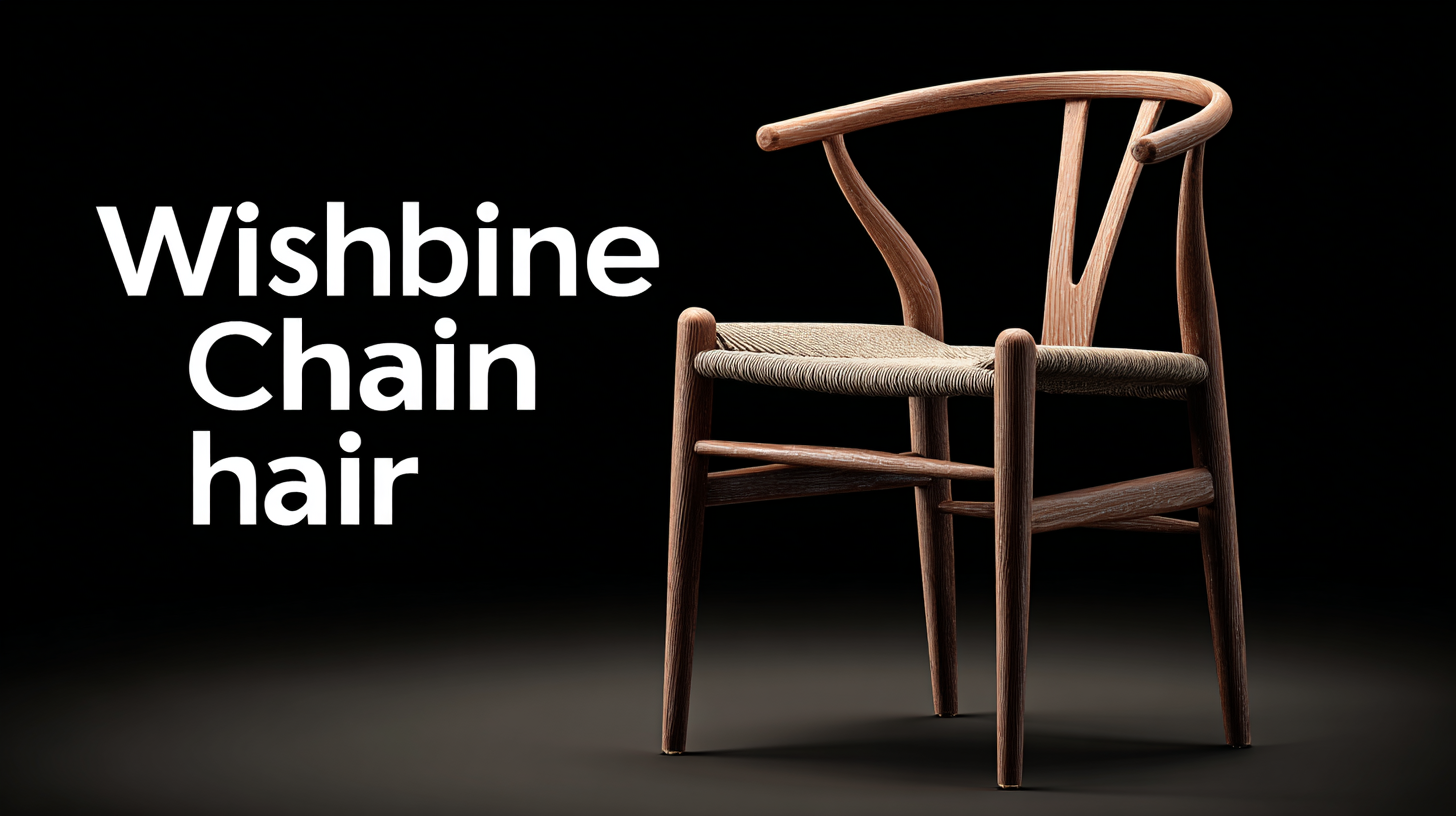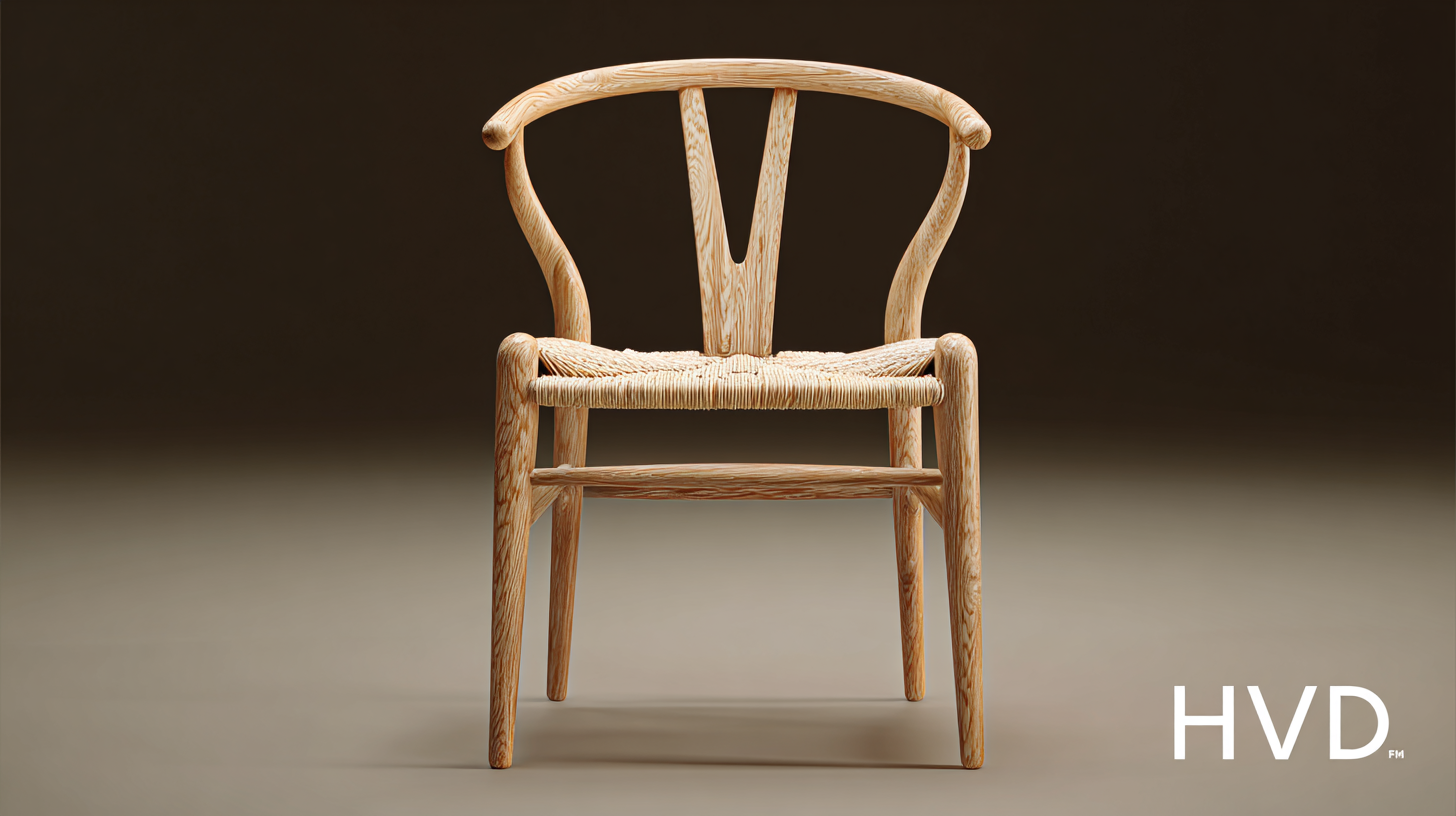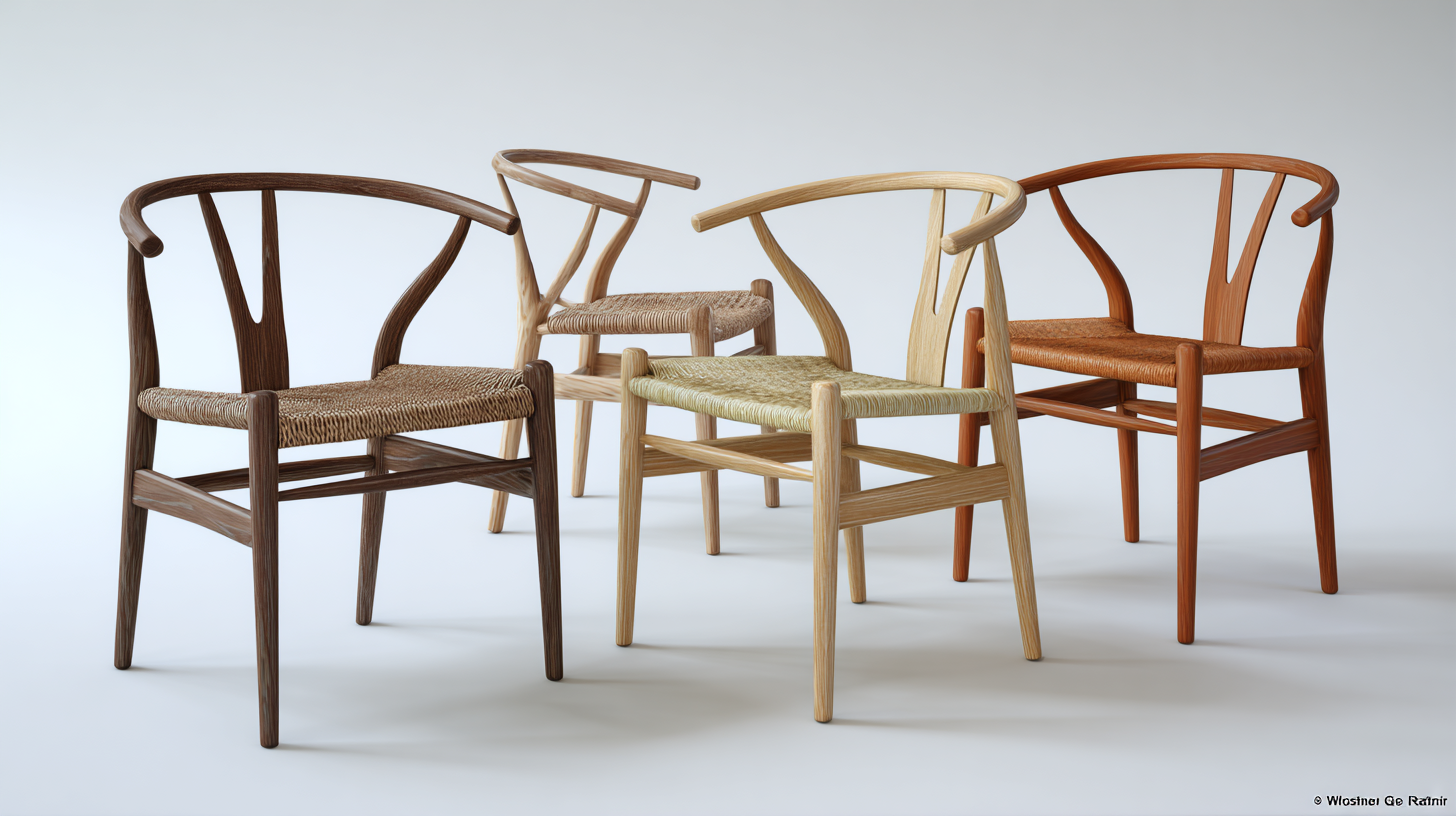Unveiling the Specifications of the Best Wishbone Chair and How to Choose the Right One for Your Space
As the demand for stylish and functional furniture continues to rise, the wishbone chair stands out as a timeless piece that elegantly marries aesthetics with comfort. According to a recent industry report by Statista, the global furniture market is projected to reach a value of $650 billion by 2025, with a significant emphasis on design-oriented items like the wishbone chair, which has adorned both contemporary and traditional spaces since its inception.

This iconic chair, originally designed by Hans J. Wegner in 1949, has not only influenced Scandinavian design but has also become a staple in homes and commercial environments worldwide. With an increasing focus on sustainability and craftsmanship, understanding the specifications and variations of the best wishbone chairs is essential for anyone looking to enhance their space with a versatile, chic seating option.
In this blog, we will explore the characteristics that make this chair exceptional and provide guidance on how to select the perfect wishbone chair for your décor needs.
Exploring the Aesthetic Versatility of Wishbone Chairs in Modern Interior Design
The Wishbone chair, designed by Hans J. Wegner, has gained immense popularity for its aesthetic versatility in modern interior design. Its elegant silhouette and organic shapes make it a timeless piece that can seamlessly blend with various decor styles. Whether placed in a minimalist setting or surrounded by eclectic furnishings, the Wishbone chair adds a touch of sophistication and warmth. The multiple finishes available—ranging from natural wood to vibrant colors—allow for customization that suits different interior palettes while maintaining its characteristic charm.
In living rooms, dining areas, or even office spaces, the Wishbone chair can serve as a statement piece or a subtle complement to the surrounding decor. Its lightweight structure makes it easy to rearrange, adapting effortlessly to different settings and occasions. Additionally, the woven seat provides comfort, enhancing its functionality.
As designers and homeowners seek to create spaces that reflect their individuality, the Wishbone chair stands out as a versatile option that enhances both aesthetics and practicality, proving that great design is not just about appearance but also about fostering a comfortable living environment.
The Impact of Ergonomics on Comfort: Analyzing Wishbone Chair Specifications
When considering the right Wishbone chair for your space, it's essential to understand the significant role ergonomics plays in ensuring comfort. The Wishbone chair, designed by Hans Wegner, is renowned not only for its aesthetic appeal but also for its thoughtfully crafted dimensions. A well-designed chair promotes natural posture, allowing you to sit for extended periods without strain. Look for specifications like seat height and depth, which are pivotal in achieving a comfortable sitting position tailored to your body.
Additionally, the curvature of the backrest and armrests are crucial ergonomic features that enhance support and encourage relaxation. Opting for models that offer a slight incline can further contribute to a more restful experience. Many Wishbone chairs are crafted with materials that provide flexibility, allowing for subtle movements, which is beneficial in promoting circulation. By paying attention to these specifications, you can select a Wishbone chair that not only complements your interior design but also prioritizes your comfort and well-being.

Material Matters: Choosing the Right Wood and Finish for Your Wishbone Chair
When selecting the perfect Wishbone chair for your space, the choice of material is paramount. Traditionally crafted from solid wood, the strength and aesthetic of the chair largely depend on the type of wood used. Beech wood is a popular choice due to its durability and smooth grain, making it a versatile option that fits various decor styles. Alternatives like oak or teak offer unique textures and tones, contributing to a more distinctive look. Consider the ambiance of your room; warmer woods can create a cozy feel, while lighter options evoke a more modern vibe.
In addition to the wood type, the finish applied to the chair plays a crucial role in its overall appearance and longevity. A natural finish enhances the wood's inherent beauty, allowing its grain to shine through, while a painted finish can introduce a pop of color to your interior. Moreover, the finish offers protection against wear and tear, prolonging the life of your chair. When choosing the right Wishbone chair, assess both the wood and finish to ensure they complement your existing decor while providing the durability you need for everyday use.
Case Studies: Successful Integrations of Wishbone Chairs in Commercial Spaces
The Wishbone chair, designed by Hans J. Wegner, has established itself as an iconic piece of furniture, particularly in commercial spaces. In recent years, numerous studies have highlighted its effectiveness in enhancing both functionality and aesthetics in environments such as cafes, offices, and retail shops. According to a report from the International Journal of Interior Architecture, spaces that incorporate well-designed furniture, like the Wishbone chair, can elevate customer experience by up to 35%, making them feel more relaxed and engaged.
Case studies reveal that many successful businesses leverage the elegant design of the Wishbone chair to create inviting atmospheres. For instance, a renowned coffee shop in Copenhagen reported a 20% increase in foot traffic after redesigning its seating area with Wishbone chairs. This data correlates with findings from the Furniture Research Journal, which noted that the right seating can influence consumer behavior significantly, encouraging customers to stay longer and spend more. The aesthetic harmony and the ergonomic benefits of the Wishbone chair make it an ideal choice for businesses aiming to enhance their customer experience while maintaining a sophisticated look.

Sustainability in Furniture: How Wishbone Chairs Contribute to Eco-Friendly Design Solutions
When considering sustainability in furniture design, the Wishbone chair stands out as a quintessential example of eco-friendly artistry. Crafted from solid wood, often sourced from sustainably managed forests, the Wishbone chair not only embodies timeless elegance but also aligns with the growing demand for environmentally responsible products. A recent report indicates that the market for sustainable furniture is expected to grow at a compound annual growth rate (CAGR) of 5.2% from 2021 to 2028, as consumers increasingly prioritize products that minimize environmental impact.
Moreover, the Wishbone chair's production process reflects a commitment to sustainability without sacrificing aesthetics. The manufacturing employs techniques that reduce waste, often using remnants from other wood products, thus maximizing resources. Additionally, its ergonomic design promotes longevity, making it a sturdy choice for homes and public spaces alike. As we see a shift towards sustainability in interior design, incorporating timeless pieces like the Wishbone chair can significantly contribute to a greener living environment, proving that style and conservation can harmoniously coexist.
Unveiling the Specifications of the Best Wishbone Chair and How to Choose the Right One for Your Space - Sustainability in Furniture: How Wishbone Chairs Contribute to Eco-Friendly Design Solutions
| Specification | Details |
|---|---|
| Material | Solid Beech Wood or Oak |
| Finish | Natural Oil or Water-Based Lacquer |
| Dimensions | W 21.25" x D 20.5" x H 29.5" |
| Weight Capacity | Supports up to 300 lbs |
| Eco-Friendliness | Made from sustainably sourced wood |
| Design Style | Scandinavian and Minimalist |
| Comfort Features | Curved Backrest and Ergonomic Seat |
| Assembly | Easy Assembly Required |

